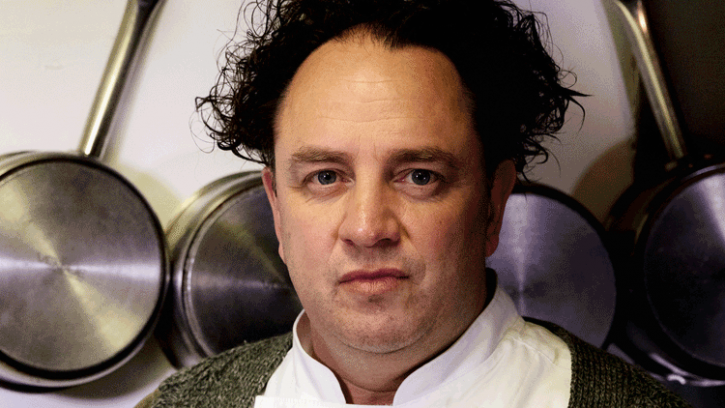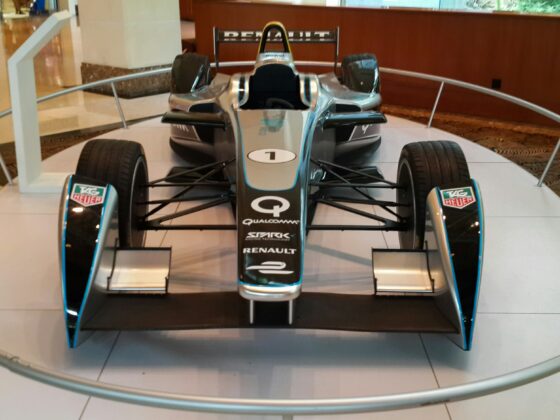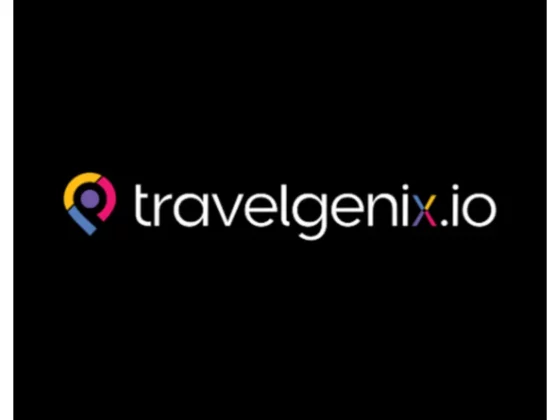This article was originally written for The Interface Magazine. It is republished here as a relevant article for Shiji Insights readers.Langham Hospitality Group SVP, Sean Seah, talks hospitality informed by innovation and falling in love with the problem, not the solution.
Sean Seah, Senior Vice President of Strategy, Technology and Innovation at Langham Hospitality Group, has spent his career learning to fall in love with the solution, not the problem. Reflecting on the process of designing a frictionless check-in experience for implementation across Langham’s (rapidly expanding) portfolio of more than 30 hotels across four continents, Seah explains: “You can’t go around with a solution like artificial intelligence (AI) just looking for things to plug it into.”
AI is absolutely the solution to some problems. And, in other circumstances, it’s absolutely not. “If I’m trying to refine the check-in experience, sure, I could try to use AI or augmented reality, or some other technology, but if it makes more sense to reorganise the lobby space with better sight lines and smoother foot traffic, why would I get hung up on implementing some shiny new tool?” Seah argues. “I don’t back a technology, I back a problem, because solving problems solves business issues. You have to fall in love with the problem and then pick the right solution, not the other way around.”
This propensity to place the end results before whichever solution happens to be in vogue doesn’t make him a Luddite or technologically conservative; Seah has spent almost thirty years at the forefront of the digital transformation process in an array of industries. Over the course of his career, he explains, he’s learned to be discerning and to suit the solution to the problem. Interface spoke with him to find out more about picking the right technology to solve business problems, how he tests, develops, and scales his solutions, and how he’s helping drive the next era of growth and transformation for Langham Hospitality Group.
Start small, scale fast, and don’t forget the people
Picking the right technology for the moment and the problem at hand – differentiating between the signal and the noise that often accompanies excitement and hype – is a skill Seah has refined over the course of his career. “When you’re deciding whether to pick a technology, you have to test and learn,” he says. “You’ve got to pilot something small – ideate it, then you can incubate it, and if it works, you figure out how to industrialise it.”
Now, back at Langham again after more than a decade, Seah is applying this approach to support the organisation’s goal to not only expand its footprint in multiple markets but to do so while leading in innovation. However, he adds that one of the most important lessons he learned early on in his career was that digital transformation is much more reliant on people than the technology.
“When you start out, you think it’s all about technology, you think it’s about new business models, you think it’s about all these new things, but it’s really about people,” he says. “It’s about how they view change and how that change impacts them.” He reflects that 15 years ago when he first started at Langham, less than 5% of all travel booking was done online: 95% of sales went through travel agents and other offline avenues involving sales in the much more traditional sense. “I’ve come back 15 years later, and it’s flipped,” he says. Now, it’s 80-to-90% digital.” While this might sound like an example of the ways in which people are less crucial thanks to digital transformation,
Seah stresses that “the most important part of a massive transformation like this is figuring out how you sell people on this new reality. How do you bring them along for this journey? And that’s been the hardest thing, changing people’s mindset, followed by getting them to accept the subsequent changes to the way they do their jobs.”
Compared to change management, Seah explains that technology is the easy part. “You just plug that in and make it work,” he says. “The hardest part of a digital transformation is getting people to change processes and use new platforms.” However, with an approach rooted in empathy and understanding, he argues that it’s easier than some think to build the kinds of relationships that support digital transformation rather than undermine it.

“ You have to fall in love with the problem and then pick the right solution, not the other way around”– Sean Seah, Senior Vice President of Strategy, Technology and Innovation, Langham Hospitality Group
A mandate to innovate
Bob van den Oord took over as Langham Hospitality Group CEO in 2023, quickly calling on his old colleague to “help him shake things up” at the group. “I jumped at the chance,” recalls Seah. “Bob is a very collaborative boss, and he gives me the space I need to get things done.” When Seah rejoined Langham, van den Oord gave him a simple two-part mandate: “One, he told me to come up with disruptive ideas, and two, he said he wanted me to build the most innovative company in the world.” So, no pressure then. Seah is measuring the success of his innovations, not just against other hotel chains, but against “the world’s most innovative companies, period. That means Apple, Tesla, and Nike. Why not?” Seah points out that all the world’s most innovative companies are in the business of using technology to curate and create experiences. “Experience is what the hotel business is all about,” he says. “An experienced design that touches all five senses: touch, taste, smell, hear, and feel.
Everyone wants to be the best, especially in luxury hotels — you want to create this magical experience, and technology enables a great deal of that experience delivery.” Seah is executing his mandate across three teams: Strategy, Technology, and Innovation.
Strategic growth and the move to cloud
The Strategy team is focused on Langham’s objective of growing the group’s footprint of 32 hotels to 100 in the next ten years. “That means mergers and acquisitions, that means buying up and incorporating entire hotel chains and that’s building the strategies to enable the growth to happen sustainably without losing the things that make us great now,” Seah says. “What works for 3 hotels doesn’t necessarily work for 30 hotels, just like what works for 30 doesn’t work for 100, or 1,000, and so on.”
“ You’ve got to pilot something small — ideate it, then you can incubate it, and if it works you figure out how to industrialise it”– Sean Seah, Senior Vice President of Strategy, Technology and Innovation, Langham Hospitality Group
A key step towards this goal, he explains, is an organisation-wide cloud migration. Seah is moving Langham’s system away from an on-premise platform to a cloud-native next generation property management system. This sets the stage for Langham to increase productivity and elevate its offerings thanks to the global synchronisation of customer data. “With an on-prem system, customer bookings get multiplied maybe three times because of three visits to different hotels.
A customer’s profile could end up on our system 50 different times over the course of several years. And, because you don’t have cloud technology to synchronise and deduplicate, we end up with 50 discrete records of you,” Seah says. “How do you personalise someone’s experience when you don’t have the complete picture of where they’ve been and what they like when they get there?” Moving to the cloud represents a “massive opportunity” to remove some of that friction.
Bridging the gap between technology and the business to build new experiences
Next, Seah is applying new technology to Langham’s operations in order to create the “next generation of experiences” – an area he relishes, as it plays to his strengths both in technology and marketing. “I’ve always wanted to be the connector between the business and technology.
Technology speaks a language, and business speaks a language, and there’s a definite gap,” he explains. “My role has always been to act as the bridge between the two. I am interested in technology and what it can do, but I also know you have to drive ROI, have to engage customers, have to pull things together.”
A perfect example of this refinement process is the Langham loyalty program. Building on the increased synchronisation of data across the newly cloud-native Langham property management platform, Seah explains that the decision to invest heavily into the organisation’s loyalty program will drive new levels of visibility into customer preferences, behaviour, and spending habits.
Recently, Seah met with several Langham hoteliers to explore the pain points they face due to a lack of interconnectivity in the organisation’s technology stack. “When a customer comes into a hotel, they don’t know whether that customer is shopping or eating or using the spa because the spa, the room, the shops, and the dining area are all on different systems. There’s nothing that unifies them,” he says. A loyalty program helps create continuity throughout the system, allowing Langham to create a new degree of personalisation.
Leveraging AI
Of course, gathering valuable data and creating visibility is just one piece of the puzzle. Another technology Seah is exploring that he hopes will empower Langham to make the most of its insights into customer behaviour and preferences is AI. “It’s a bit of a buzzword,” Seah admits, emphasising the solution-focused, experimental approach Langham is taking to adopting the technology. “We’re doing several experiments around AI analytics and productivity,” he says. First, he is using the technology to gauge how to offer “the right offer to the right customer at the right time” by leveraging AI.
As opposed to the industry standard of market pricing, Seah expects AI to allow the “marketplace” for rooms to adapt to changing circumstances and customers in a much more granular way. “If you think about an e-commerce platform like Amazon, they change the price of a product as much as 300 times a day,” he explains. “That’s a personalised offer, not a generic market offering.” Seah and his team is also testing AI as a productivity enhancement tool, including a co-pilot test with Microsoft to speed up back-office operations, as well as an AI learning tool to help employees learn more about the company’s loyalty program. “We trained an AI on the program, and now it can answer more or less any question about the program,” Seah says. “How many points do I need for this? What status am I doing for that? Instead of reading through a manual, typing into a search query, you literally just talk to it.”
Regardless of the technology or business model — or the problem being solved — Seah applies the same methodology to implementing new innovations. “Once you’ve got your idea, you start small, and then you scale,” he says. “The good thing about hotels is you can start with one hotel, see how it goes, iterate, and move on.” He adds that the first transition of a hotel to cloud took around six months to take shape. “We knew we needed to really understand the impact of the migration before we rolled everything else out,” he says. “You test and you learn, and then once you’ve done that, you scale as hard as you can. You push it everywhere, communicate, collaborate, and manage change with empathy”.
On a mission to scale
Mixing strategic expansion with innovation and digital transformation is a complicated prospect, especially at a time of upheaval for the hospitality sector. Langham Group is committed to its growth roadmap, however, and Seah is committed to supporting this profound scaling up of the company’s footprint. “Obviously, I think we’re going to see some growing pains because, when you scale something, it’s a challenge to hang onto the essence of it – especially if it’s tied to luxury – on a mass scale,” Seah reflects. “But I know if we hang onto the right team with the right mindset and the right methodology, we can do it.”
While it’s easy to think of hotels as being uniquely customer facing, Seah stresses the fact that he has “three core audiences: the property owners, the customers, and the team that services and creates the experiences. We’ve got to get the process right across all three groups to make Langham the most successful and innovative company it can be.” Reflecting on his mandate and the road ahead, Seah says he fully intends to fulfilI his mandate to build “the most innovative brand” in the world. “If someone in the future says, ‘What’s the most innovative company?’ they’ll say, ‘Apple, Tesla, Nike, Langham,’ then I’ll have done my job,” he laughs.








